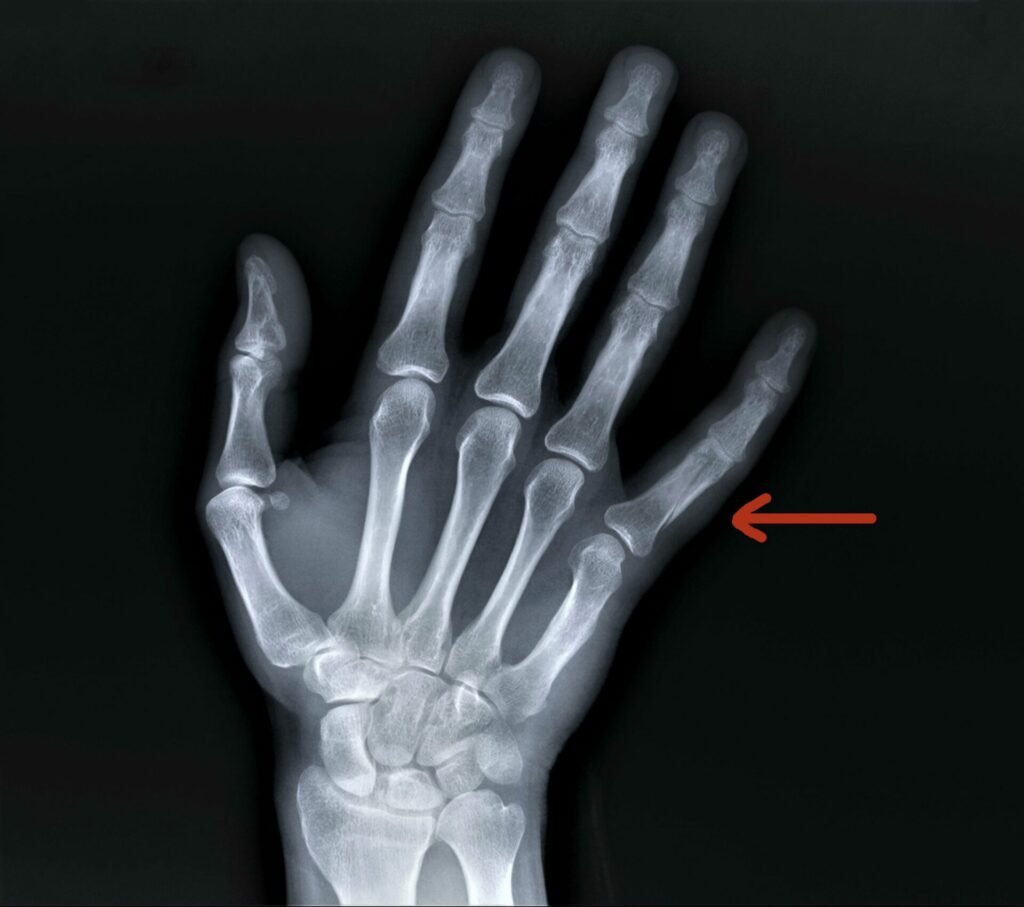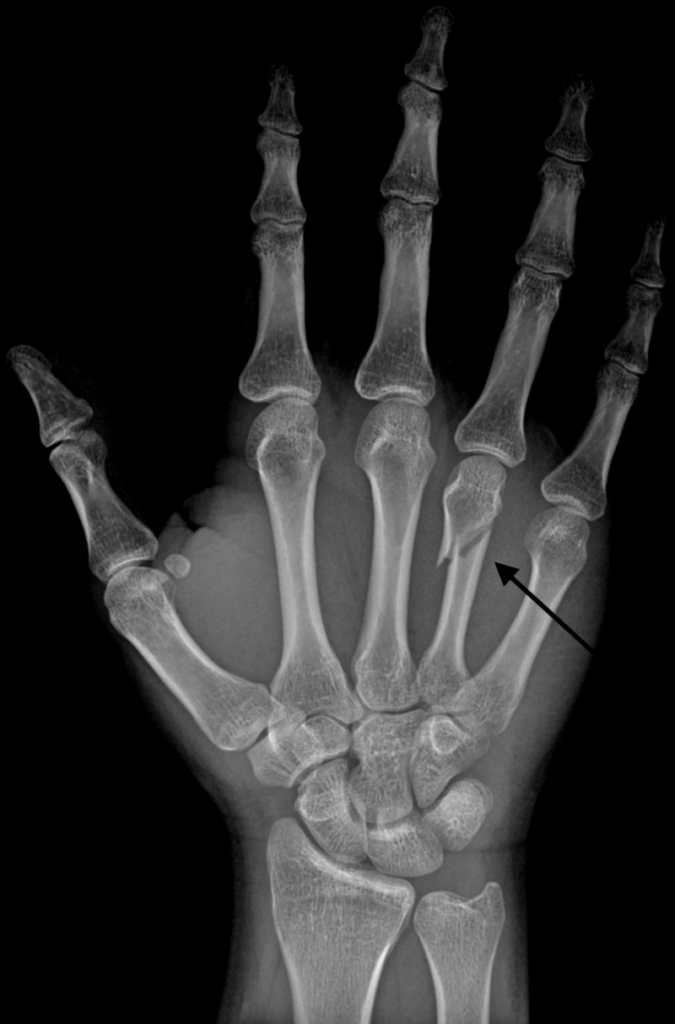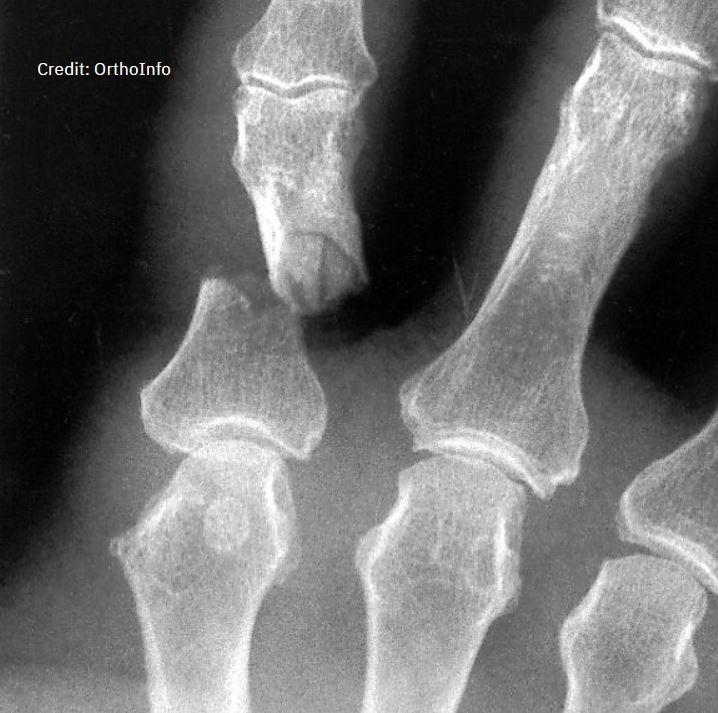It’s very common for hand and wrist fractures to occur throughout our lives. They’re both delicate areas of the body which can fracture quite easily, so it’s important to know what fractures can occur in each one.
In today’s article, we’re going to dive into the different types of hand and wrist fractures; and discuss what treatment options are available to you.
Hand fractures
There are four different fractures to watch out for in your hand: proximal, avulsion, carpal, and metacarpal (boxer fracture). Each one can be difficult to manage and hand fracture treatment varies depending on the severity of the fracture. But don’t worry, we will explain how you can easily avoid these types of fractures. Keep reading to find out more.
Proximal fracture
A proximal fracture is probably the most common to occur out of the four fractures. Typically, a proximal fracture occurs when your finger is fractured or broken. This can be caused by an array of things, such as a twisting injury, a fall, a crush injury, or direct contact in sports. A big tell-tale sign of this fracture is bruising and swelling will appear in the damaged area.
If you’re not in any discomfort from it, then the likely chance is that it’s not a serious fracture. The doctor will probably tell you to take some painkillers and put some ice on it to reduce inflammation. However, if it is a serious fracture then surgery might be recommended for you so the specialists can realign the bones.
Metacarpal fracture
A metacarpal fracture, more commonly known as a boxer fracture, occurs when the metacarpal bones are fractured. The most common cause of this is the result of a punch, hence the name boxer’s fracture. When a clenched fist impacts a hard surface or object, the metacarpal bones begin to bend till they break. You will be able to identify quickly if you’ve suffered a metacarpal fracture as you will either be in excruciating pain; swelling, discolouration and bruising will appear in the area, or in some cases – the bone will pierce through the skin.
If you’re looking for metacarpal fracture treatment, then don’t worry – we have you covered. Here at Ladan Hajipour, you’re taken care of by a specialist in hand and wrist injuries with over 10 years of experience; and hundreds of positive reviews left by patients.
Carpal fracture
Another common hand fracture which can easily go unnoticed is a carpal fracture. Due to the complex bone shape, it’s difficult to diagnose the fracture which can cause major issues further down the line. However, as long as you have thorough conversations with your doctor about it you should be fine.
If you’re not sure whether you have a carpal fracture or not, then a good sign to spot this is you will be in some pain and discomfort. If this is the case, reach out to your doctor so they can examine you. If there is no obvious injury from the x-ray then you will need to wear a cast to help protect the bone. If the doctor suspects your carpal bone is fractured then they might seek a second opinion from an orthopaedic surgeon.
Avulsion fracture
The last hand fracture on our list is an avulsion fracture. Now, there is a good chance that out of all of these hand fractures, this is the one you’ve least likely heard of. But in short, an avulsion fracture appears when a small piece of the bone gets pulled away from the main part of the bone. In this situation, the ligament will move in the opposite direction with a broken piece of bone left unattached and loose within the hand.
The main cause of this fracture is high-impact sports; the constant strain from the movements you are making can result in a fracture. Typically, swelling and bruising will be the first symptoms you’ll experience. So, as soon as you start to see these appear, get in touch with your doctor and they will be able to determine if you have a fracture or not.
If you’re looking to find out more information about each hand fracture treatment. Get in touch today.
Wrist fractures
Now we’ve discussed the different types of hand fractures, it’s time to discuss wrist fractures. There are three types of wrist fractures: a scaphoid fracture, colles’ fracture, and a standard wrist fracture. At Ladan Hajipour, we have years of experience offering wrist fracture treatment and succeeding with excellent results.
Scaphoid fracture
The first wrist fracture we will be diving into is a scaphoid fracture. Now, a scaphoid fracture is the breaking of your scaphoid bone, which is one of the carpal bones in the hand. Usually, this fracture occurs when you fall onto your outstretched hand; e.g. your palm will be flat when you land on the ground but your wrist will be bent backwards.
You can identify whether or not you have a scaphoid fracture by noticing any pain; or bruising and swelling around your wrist. If the bone has not been displaced, a doctor will recommend putting your arm in a cast from the wrist to your elbow. If the bone has been displaced, wrist surgery is required to heal the fracture. If afterwards, you’re still in pain, your doctor will show you the types of wrist support available to you. There are multiple wrist fracture treatment options for you should you need it.
Colles’ fracture
Colles’ fracture is characterised by the distal end of the radius bone breaking and displacing towards the back of the hand. This displacement can lead to pain, swelling, bruising, and limited mobility in the affected wrist. Treatment for Colles’ fracture involves realigning the broken bones through reduction, which may require a manual manipulation or surgical intervention, followed by immobilisation with a cast or splint to allow for proper healing.
Wrist fracture
The final fracture on this list is a typical wrist fracture. Any break that involves the 2 long bones of the forearm (radius and ulna) are considered wrist fractures. Typically a wrist fracture is caused by a simple fall; all of your body weight will land on your wrist which results in a fracture. There is wrist fracture treatment for you to choose from depending on the severity. Usually, a wrist fracture can be treated with a moulded cast if it is not severe. However, if the fracture is found to be displaced and unstable, surgery will be advised to restore the anatomy for better function.
At Ladan Hajipour, we specialise in wrist surgery in Manchester; offering excellent service to all of our patients. We have a huge range of patients who have been more than happy with our services – discover them here.
We hope you have enjoyed reading our latest article about the different types of hand and wrist fractures. If you have any more questions about the fractures, get in touch with us today!







